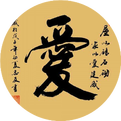Treatment of Damp-Heat Syndrome in the Middle Jiao (Part II)
Treatment of Damp-Heat Syndrome in the Middle Jiao (Part II) Continuing from the previous issue: Treatment of Damp-Heat Syndrome in the Middle Jiao (Part I) 2. Equal Presence of Damp and Heat 1) Damp-Heat Obstruction 【Clinical Manifestations】 Fever, irritability, chest and epigastric fullness, nausea and vomiting, loose stools that are yellow and foul-smelling, yellow greasy … Read more









